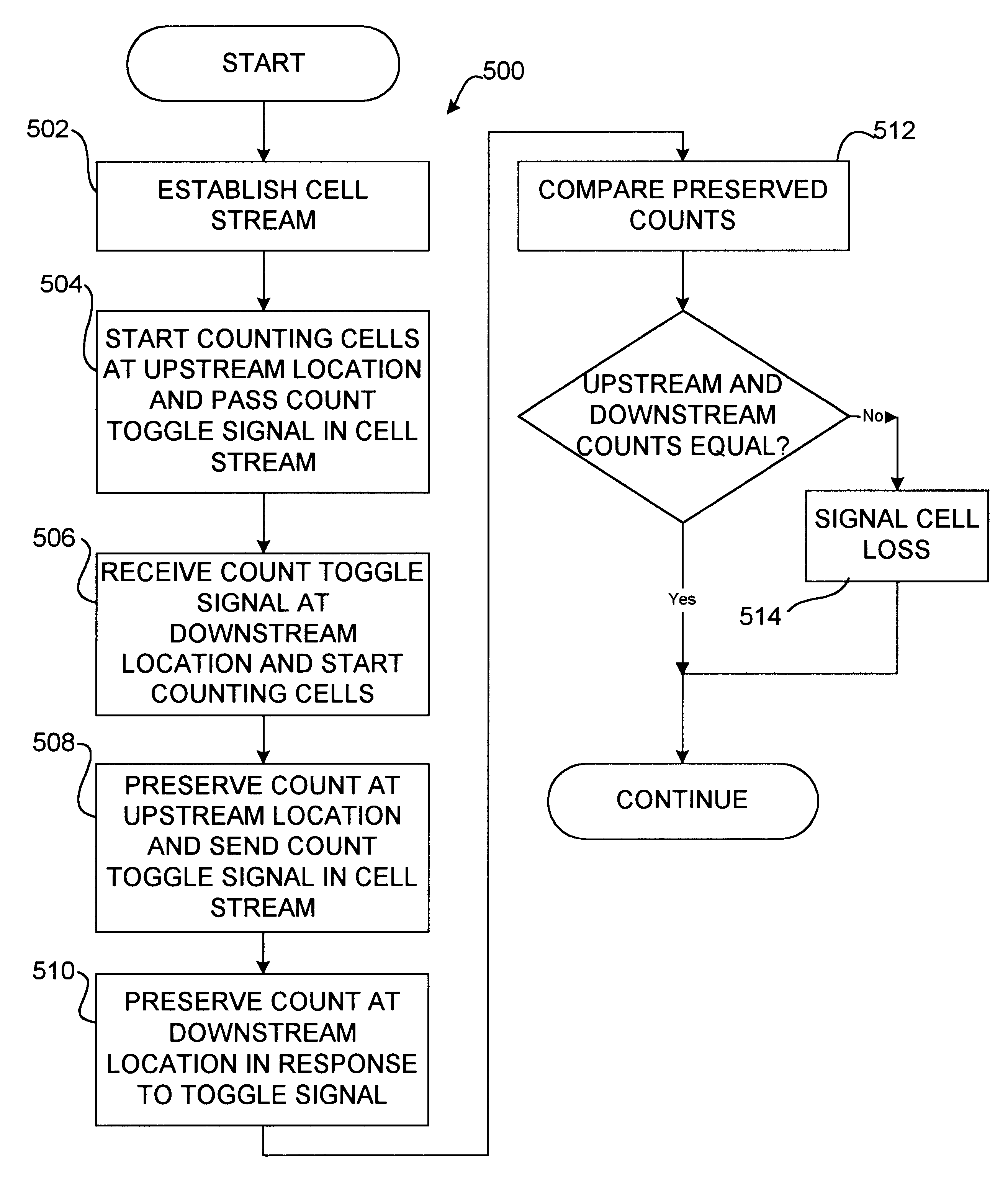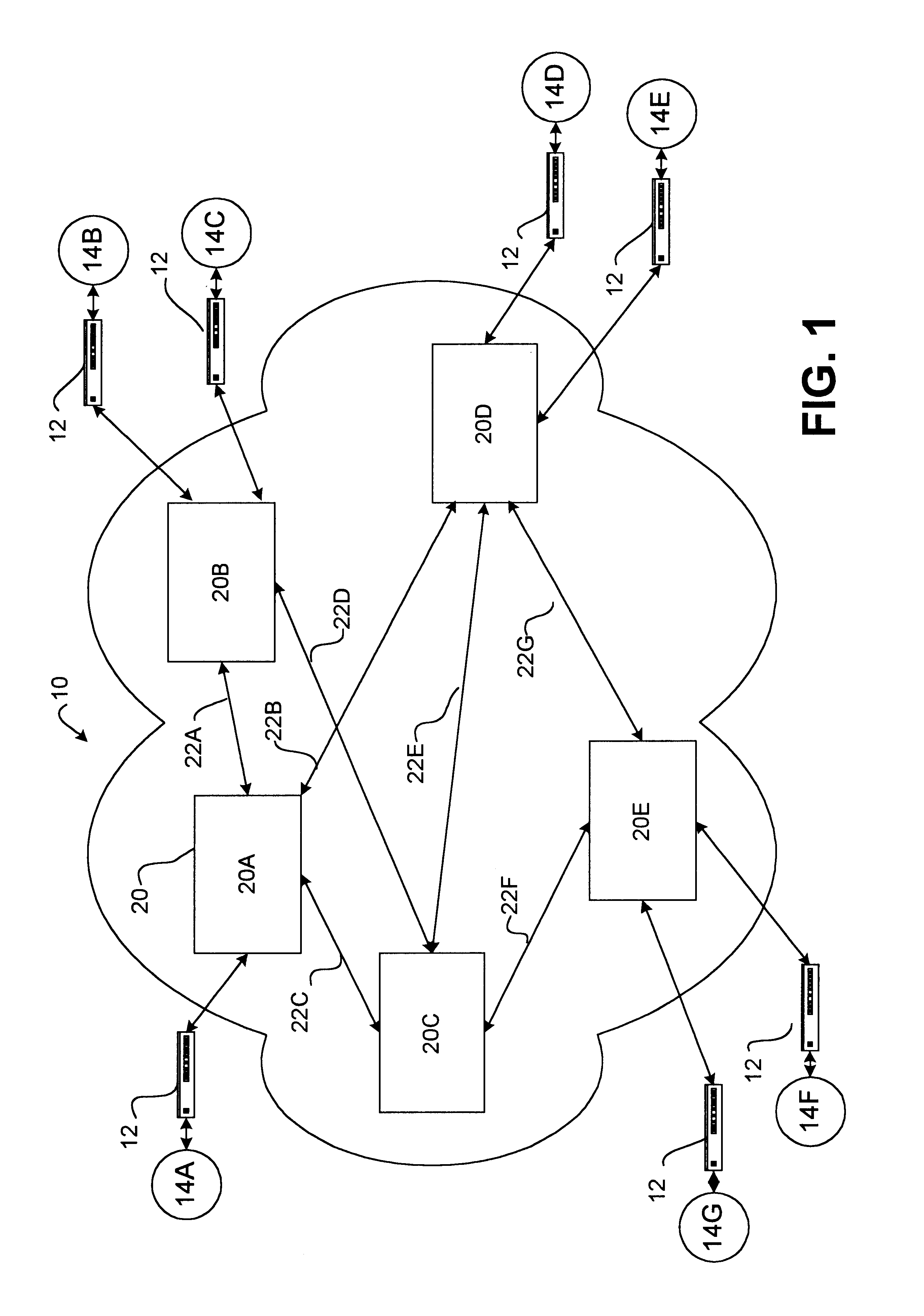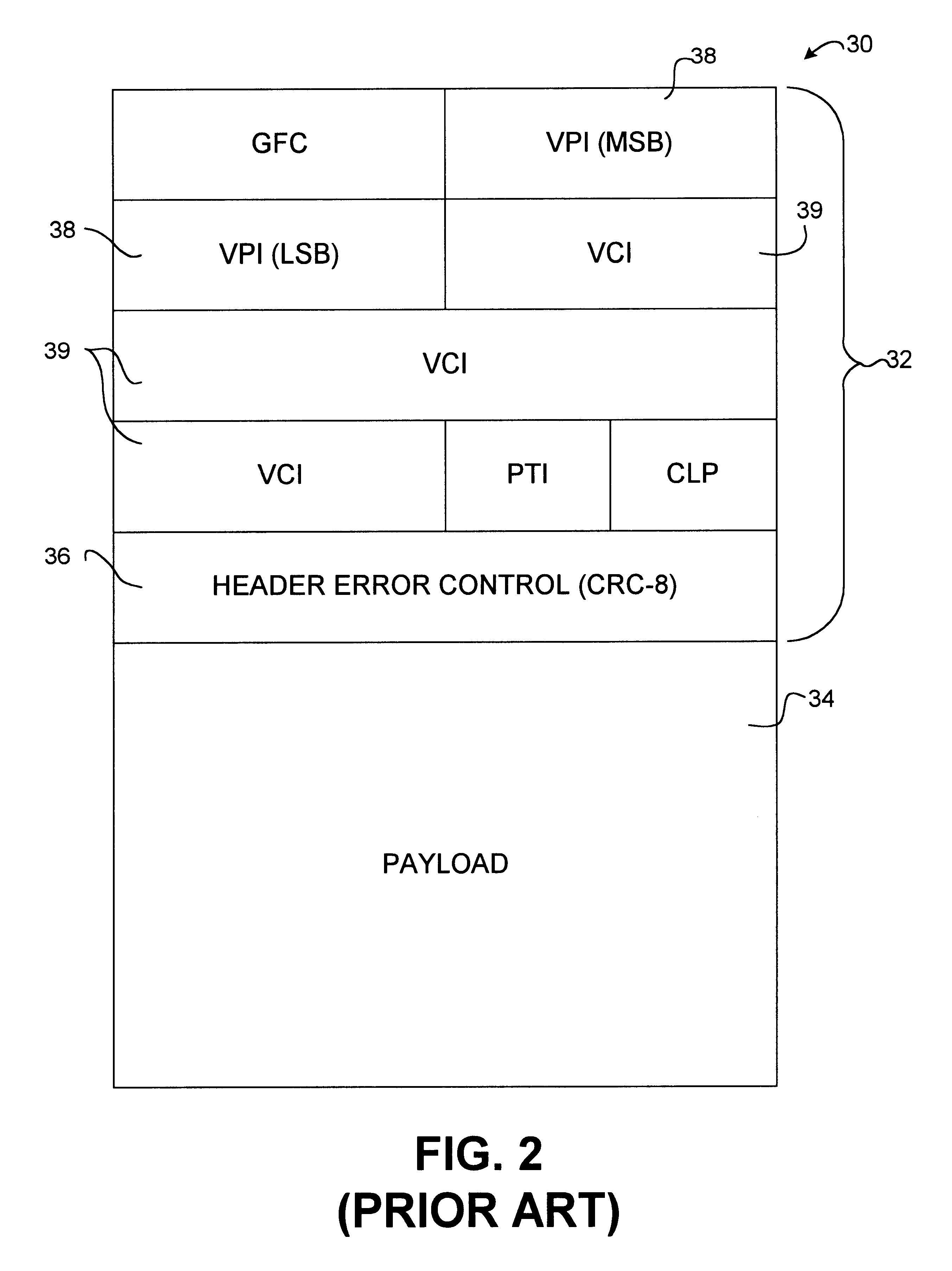Method and devices for cell loss detection in ATM telecommunication devices
- Summary
- Abstract
- Description
- Claims
- Application Information
AI Technical Summary
Benefits of technology
Problems solved by technology
Method used
Image
Examples
example 2
Count Synchronization Signal Switches Between Counters
FIG. 8 shows a portion of a switch 20 set up according to a second exemplary embodiment of the invention. In FIG. 8, instead of a single counter for each cell stream passing through the counting device 62, there are two or more separate counters for each cell stream. In the illustrated embodiment there are two counters which are labelled for reference COUNTER A and COUNTER B. At any given time only one of the two counters is active. Which counter is active is indicated in an active counter ("AC") field within array 63. The inactive one of the two counters for each cell stream preserves the value that it had immediately before becoming inactive.
On the occurrence of a toggle event for a cell stream, counter 62 switches to the other counter for that cell stream. Synchronization setter 64 writes a value to a synchronization flag within cells in each data stream in a manner which signals to downstream synchronization detector 72 when ...
example 3
Count Synchronization Signal Carried in PM Cells
FIGS. 10 and 11 illustrate a third exemplary embodiment of the invention. In the embodiment of FIGS. 10 and 11, a synchronization signal is included in a Performance Measurement (or "PM") cell. PM cells are additional, identifiable, ATM cells which are inserted from time to time into each cell stream being monitored. In the FIG. 10 embodiment, synchronization flag setter 64 is replaced by a PM cell inserter 84. PM cell inserter 84 receives a signal from counter 62 on line 65 when a PM cell should be inserted into a cell stream. A PM cell detector 85 detects PM cells and sends a signal to counter 69 which causes counter 69 to preserve the number of cells counted in the cell stream in which the PM cell was detected since the last PM cell in that cell stream.
Two modes of operation are possible. In a first mode of operation, PM cells are periodically inserted into the cell stream in such a manner that a predetermined number of other cells ...
example 4
Sequence Numbers Provide Count Synchronization Signal
FIGS. 12 and 13 illustrate a fourth exemplary embodiment of the invention. This embodiment differs from the embodiments described above in that a counter value for each cell is delivered in the cell stream to down stream locations.
As shown in FIG. 12, apparatus 20 includes a counter 62 which counts the cells passing the counter in each cell stream and stores a sequence number in an associated array 87. A sequence number inserter 86 inserts the sequence number of each cell into the cell at an up stream location. One or more sequence number checkers 88 are located at downstream locations. Each sequence number checker 88 has a an associated array 89 for holding sequence numbers of previously received cells in each cell stream.
The apparatus 20 of FIG. 12 can be operated according to the method 1300 of FIG. 13. Method 1300 begins by receiving a cell (Step 1302) and determining the cell stream to which the cell belongs (Step 1304). A se...
PUM
 Login to View More
Login to View More Abstract
Description
Claims
Application Information
 Login to View More
Login to View More - R&D
- Intellectual Property
- Life Sciences
- Materials
- Tech Scout
- Unparalleled Data Quality
- Higher Quality Content
- 60% Fewer Hallucinations
Browse by: Latest US Patents, China's latest patents, Technical Efficacy Thesaurus, Application Domain, Technology Topic, Popular Technical Reports.
© 2025 PatSnap. All rights reserved.Legal|Privacy policy|Modern Slavery Act Transparency Statement|Sitemap|About US| Contact US: help@patsnap.com



